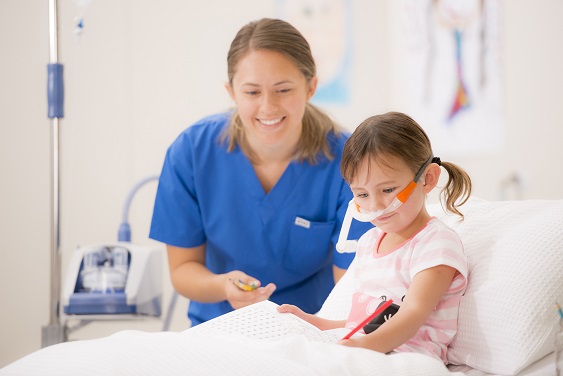High Flow Nasal Cannula Treatment for Infants and Children with Acute Respiratory Failure – a Pilot Trial
Assess which infants and children with acute respiratory failure benefit using HFNC therapy.
Grant ID: EMSS-233R24-2015
Project Summary
Worldwide, the respiratory distress associated with pneumonia and other causes remains the leading cause of death in children. In Australia 39% of intensive care admissions for children are due to respiratory disease, with bronchiolitis/viral infection representing 17%, asthma 7% and pneumonia 7%. There is an emerging trend to support respiration with methods other than oxygen, particularly in the early stage of disease process aiming to prevent the progression of disease. In under resourced countries children presenting to hospitals with severe pneumonia have a mortality rate between 13-20% and most deaths occur with hypoxemia before therapeutic benefit of antimicrobials. High flow nasal cannula (HFNC) therapy is a new promising mode of respiratory support as an alternative to non-invasive ventilation, which is poorly tolerated by a sick child. HFNC therapy can be used very early in the disease process and requires little cooperation
This study aims to develop a multi-centre trial and to assess which infants and children with acute respiratory failure benefit using HFNC therapy. For this purpose we will perform a randomised controlled trial comparing current best practice (standard oxygen delivery via subnasal prongs, facemask, venturi mask) versus HFNC therapy. With the introduction of this simple to use respiratory system administered earlier in the disease process, we aim to investigate if HFNC therapy has a lower treatment failure rate in comparison to standard oxygen delivery, and to investigate if there is a reduction in the need for transfer of these patients to a tertiary hospital or admission to intensive care.
Outcomes
This pilot study was completed with 260 enrolled patients. On analysing preliminary data, the team decided to finalise the pilot and rapidly expand the study to enroll a larger number of children with acute hypoxic respiratory failure, aged 1-4 years. Initially, the study was expanded to four sites in 2017. Following an NHMRC grant, the trial was expanded across 20 participating sites in Australia and New Zealand in 2018.
Leveraged Funds
- $300,000: Children’s Health Foundation
- $321,000: Thrasher Foundation Award
- $2.63 million: National Health and Medical Research Council (NHMRC) 2018 Project Grant
Dissemination
Gc, V.S., Franklin, D., Whitty, J.A., Dalziel, S.R., Babl, F.E., Schlapbach, L.J., Fraser, J.F., Craig, S., Neutze, J., Oakley, E. and Schibler, A., 2020. First-line oxygen therapy with high-flow in bronchiolitis is not cost saving for the health service. Archives of disease in childhood, 105(10), pp.975-980.
Ramnarayan, P. and Schibler, A., 2017. Glass half empty or half full? The story of high-flow nasal cannula therapy in critically ill children.
SHARE




